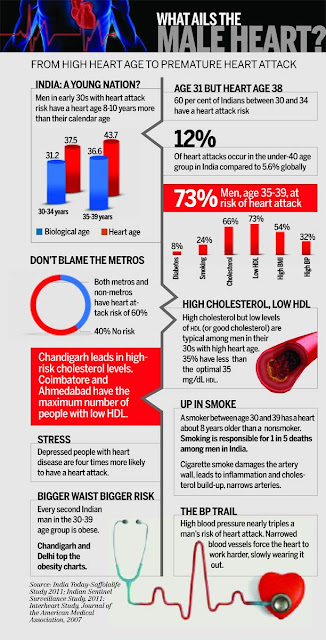Angiography ( CAG )
Well explained through animation
What is Angiography ?
This test can show how well the heart valves work, as well as check for any defects in the way the wall of the heart moves.
The test, called an angiography, is performed in cardiac catheterization laboratory ("cath lab") by a cardiologist.
The test, called an angiography, is performed in cardiac catheterization laboratory ("cath lab") by a cardiologist.
By injecting a small amount of dye through a catheter into your heart chamber or one of your coronary arteries, the cardiologist is able to get images of the arteries as the dye moves through them.
Self explanatory images
Why did your doctor request a cath test ?
Your doctor ordered a cardiac catheterization to find out if you have disease in your coronary arteries (atherosclerosis).
This test is also used to diagnose anatomical problems, like valvular problems, deformities in the heart muscle and arrhythmia.
If you have atherosclerosis, this test can pinpoint the size and location of fat and calcium deposits (plaque) that are narrowing your coronary arteries.
Results from cardiac catheterization help determine what treatments, such as angioplasty or stenting, may be effective for you to open blocked valves.
Cardiac catheterization is also done to:
1. Check the pumping action of the heart
2. Find out if there is a congenital heart defect (a heart problem you may have been born with)
3. Check blood flow through the heart after surgery
4. Find out how well the heart valves work
How a cath test is done
Cardiac catheterization (“cath”) uses a catheter – a thin, hollow, flexible tube – inserted into the artery of the groin or arm.
Cardiac catheterization (“cath”) uses a catheter – a thin, hollow, flexible tube – inserted into the artery of the groin or arm.
Using X-rays, the tip of the catheter is guided to the heart and allows your doctor to see an angiogram, or movie, of the heart and blood vessels by injecting a dye through the catheter.
This helps the doctor see your coronary arteries at work.
The dye or contrast material helps your doctor take X-ray pictures of your heart.
Intravenous (“IV”) medicines are used to relax you.
Intravenous (“IV”) medicines are used to relax you.
Let your patient care team know if there is any discomfort during the procedure.
The goal is to keep you extremely comfortable and relaxed without being put to sleep.
You will be given a local anesthetic to numb the area where the catheter will be inserted.
A thin flexible wire is then inserted through a needle.
A thin flexible wire is then inserted through a needle.
This is known as a guide-wire because it helps guide catheters.
The needle is then removed and the sheath or tube is left in the artery to allow your doctor to perform the test.
A cardiac cath is a relatively safe procedure.
A cardiac cath is a relatively safe procedure.
Occasionally, patients have a rash as an allergic reaction to the contrast material.
Other infrequent complications can include bleeding that requires blood transfusion or surgical repair, blood clots and a sustained abnormal cardiac rhythm.
Rare serious complications can include death, a heart attack, stroke and need for emergency surgery.
Sometimes performed during cardiac catheterization, an intravascular ultrasound calls for a transducer to be threaded into the cardiac arteries through a catheter in the groin.
This test can provide detailed information about the atherosclerosis (a hardening of the arteries) inside the blood vessels.
After the test, the catheter will be removed from the insertion site.
After the test, the catheter will be removed from the insertion site.
To prevent bleeding, the site may be closed using pressure or a closure device.
After the test, a health professional will periodically monitor your heart rate, blood pressure and temperature and check for signs of bleeding at the insertion site.
If the catheter was inserted in your leg, you may have to lie still with your leg extended for several hours, depending on the procedure used and your medical condition.





Comments
Post a Comment